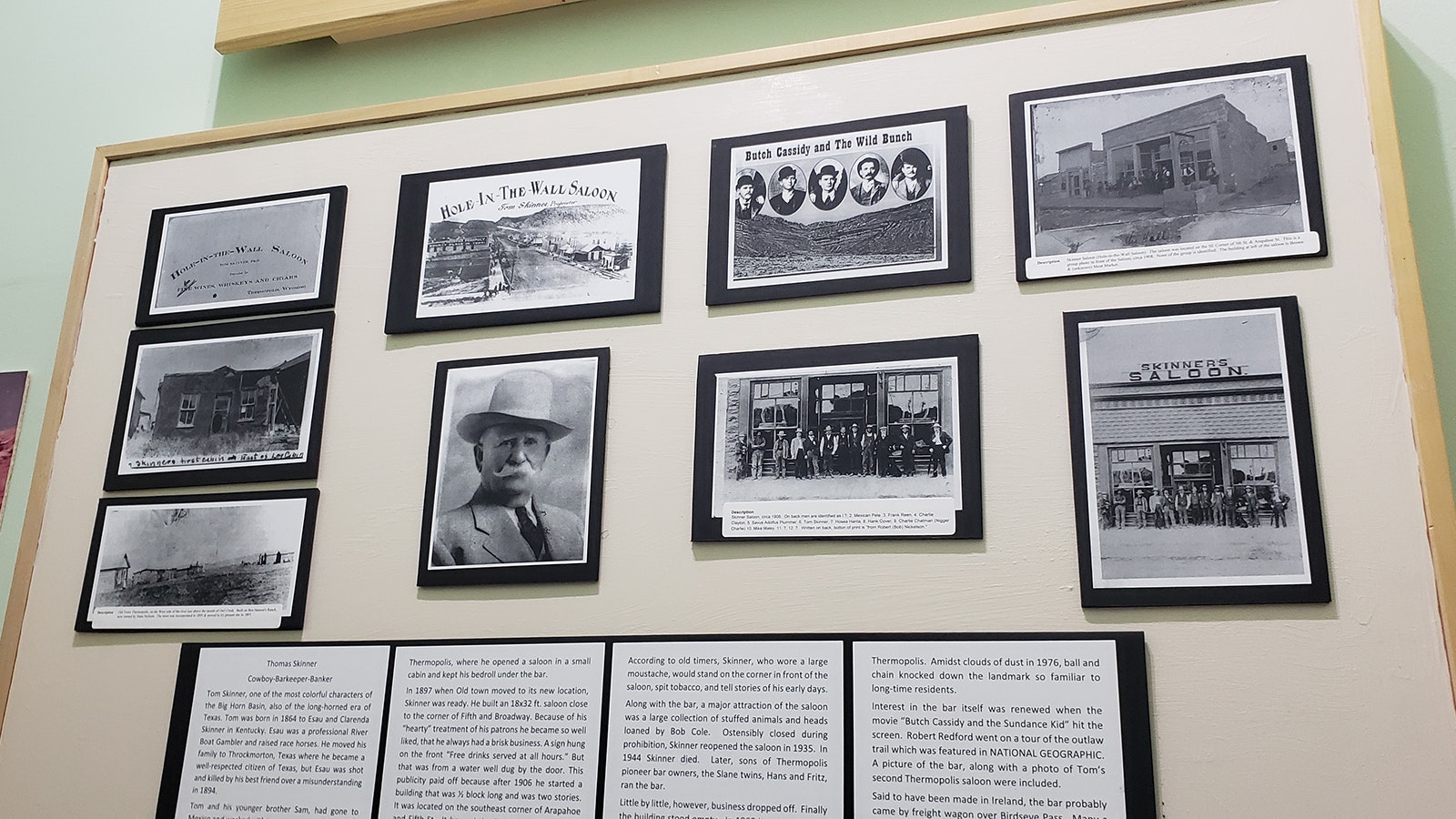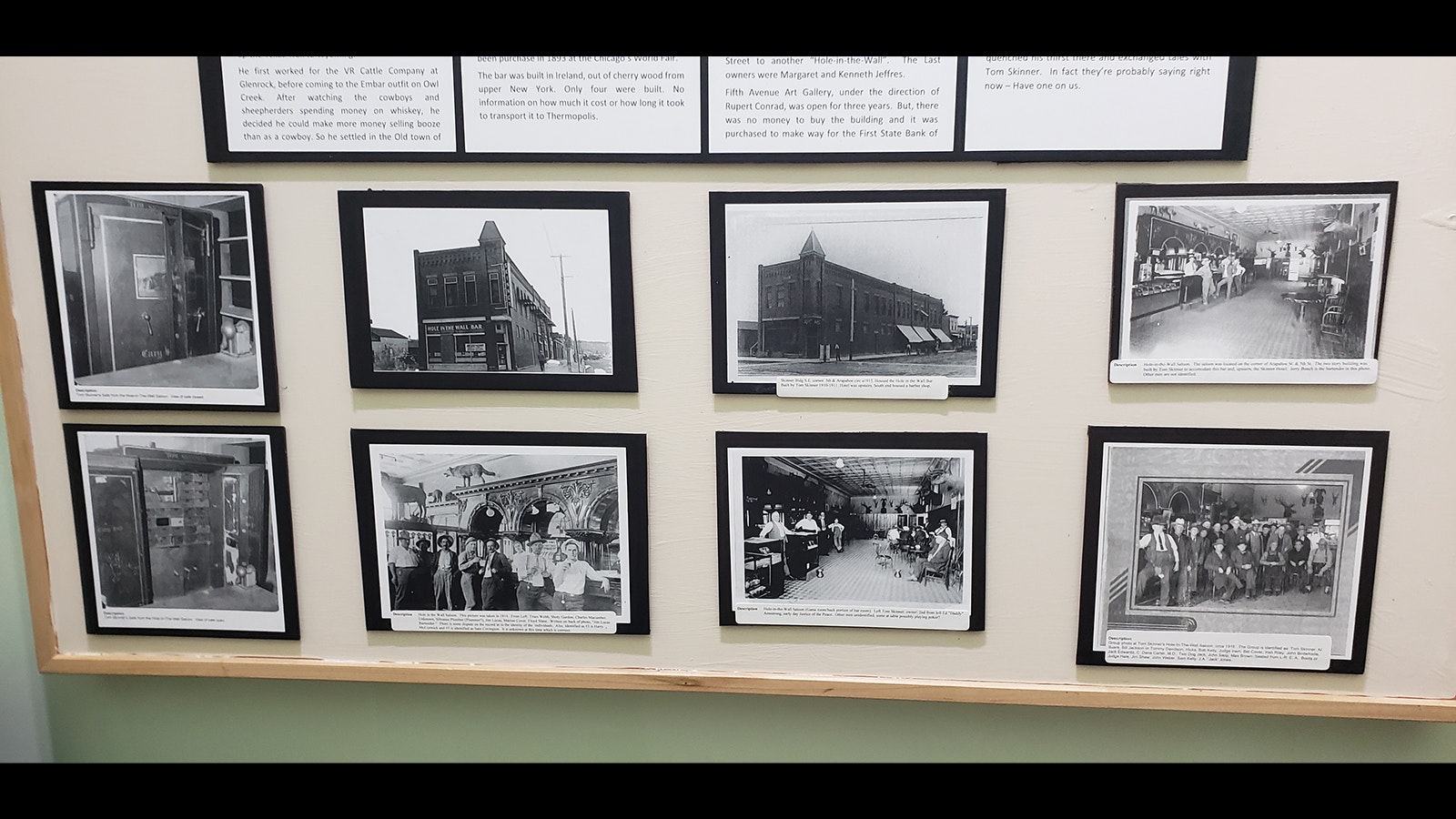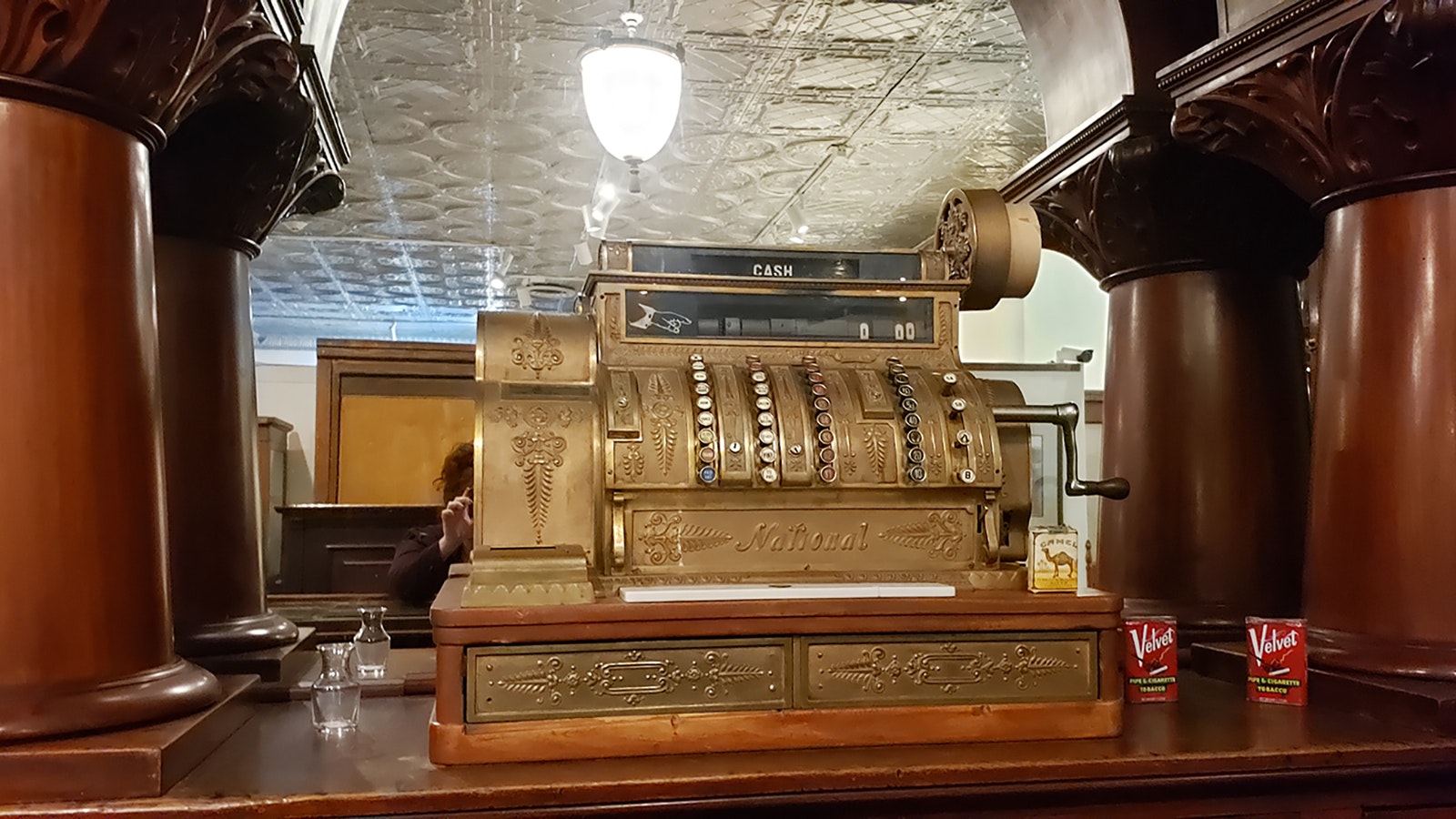THERMOPOLIS — Little hole-in-the-wall bars are typically thought of as small dives that are unpretentious and out of the way.
But the original Hole in the Wall Saloon’s bar in Thermopolis at the turn of the 20th century was something else entirely.
The cherry wood bar was as beautiful and as ostentatious as they come. The product of new world America and old world Europe, only three or four like it ever made it back to America.
They started out as cherry wood pieces cut in New York that were shipped overseas to Ireland, where ornate designs and styling were carved into the expensive wood.
One of these bars was used at the Chicago World’s Fair, where it attracted the eye of Tom Skinner, who decided he had to have it for his establishment, the Hole-in-the-Wall Saloon in Thermopolis, Wyoming.
The Saloon’s Hole-in-the-Wall name was a reference any outlaw in Thermopolis would recognize. Skinner was himself well aware that it referred to a notorious hideout 80 miles east of Thermopolis in present-day Johnson County.
While the canyon wall hiding it looked unbroken and impassable, for those who knew exactly where to look, there was a narrow crack where a lone horseman could slip through, as if he had somehow ridden right through the wall.
Behind the canyon wall was a lush valley that was an ideal spot to hide stolen cattle and horses until they could be driven to Montana or some other location far, far away to sell them.
This was where Butch Cassidy and his “Wild Bunch,” as well as dozens of other loosely associated gangs, went to lie low when the heat was on.
No lawman ever breached the Hole in the Wall while there was an active force of bandits using it. Today, the Hole in the Wall still exists. It’s on the Willow Creek Ranch, not far from Kaycee.

Robert Redford Liked The Bar Too
Skinner wouldn’t be the last wealthy man to take a liking to the bar that had been in the Hole-in-the-Wall Saloon.
“Robert Redford wanted to buy it, and he offered (the Hot Springs County Museum & Cultural Center) quite a bit of money for it at the time, but they said no,” Thermopolis Tourism Director Jackie Dorothy told Cowboy State Daily. “So then, what he did instead is he had a local photographer come in, and I’ve talked to Jeb Schenck about it, and he says, ‘Yeah, that’s what he did is he took pictures of the bar.’”
Schenck was the one commissioned to take the photos of the bar for Redford, who played the Sundance Kid in the 1969 Western, Butch Cassidy and the Sundance Kid. Schenk recalls going into the museum after hours to take the photos, because he needed to set up photography lights, and take quite a few pictures to capture each and every detail.
Dorothy and Schenck believe the photos were used to help make a replica that was placed in the movie star’s basement.
Redford did manage to buy a different bar from a saloon, The Owl Bar, which he placed in the Timp Haven Resort in Utah, renaming it the Sundance Mountain Resort. Redford sold the bar and the resort in 2020.
The original bar that was in the Hole-in-the-Wall Saloon, however, remains in the Thermopolis Museum, where it’s part of an exhibit that retells some of the town’s outlaw past. Occasionally, the bar is brought out of retirement for a special night of old-fashioned cocktails in the museum.
Dorothy has been putting a lot of research into the outlaw stories of Thermopolis. The town was a favorite of Hole-in-the-Wall gangs like Butch Cassidy and the Wild Bunch.
Dorothy sees the outlaw tales as a largely untapped tourism resource, that can draw visitors to Thermopolis and Hot Springs County. Everyone loves a good outlaw legend, and she’s been digging up quite a few intriguing tales and mysteries.
Founder By Day, Outlaw By Night
Skinner was just one of the many outlaws who lived a double life in Thermopolis.
In those days, powerful cattle barons were known to falsely accuse homesteaders of being cattle and horse thieves and then hire assassins to kill them off. These powerful men were not above using tax laws to their advantage as well, to kick widows off their land.
One of the tales Dorothy tells is how Cassidy loaned one such widow $75 for the taxman, who was disappointed when the tax bill was paid in full. On his way back, the taxman was robbed at gunpoint by none other than Cassidy.
While the cowboys were branded as outlaws for such actions, Dorothy said they felt their actions were justified, because the law wasn’t looking out for the little guys — the homesteaders and the cowboys. It was looking out for rich cattle barons instead.
Skinner was one of many young men who came to Thermopolis to be a cowboy, but quickly realized he wasn’t going to make any real money that way. So, he opened a bar to sell liquor and help his fellow cowboys out.
Saloons in those days doubled as banks. Skinner would keep money and valuables for his outlaw customers, helping them to fence stolen items.
Dorothy has found historical documents suggesting Skinner may have been keeping some of the very hottest stolen items hidden in his safe.
“I found a writing from Millard Simpson,” Dorothy said. “(He) wrote in the letter that Tom Skinner had money in his safe, actual money from the whole Wilcox train robbery.”
The Robbery Heard Around The World
The Wilcox robbery happened in 1899. Five masked men forced a Union Pacific Train near Wilcox in Albany County to stop. They used dynamite to blow up the safe, stealing an estimated $36,000.
While Redford’s movie placed Cassidy on the scene, the historical record doesn’t necessarily support that. While members of the Wild Bunch were there, Cassidy himself had, as a condition of a pardon, promised he would not commit any more crimes in Wyoming.
In any case, the money in Skinner’s safe included burnt bank notes and gold, according to the letter Simpson had written.
Pinkerton detectives, which were forerunners of the FBI and CIA, were hot on the trail of such loot, but never could find it. Skinner was too good at keeping his nose clean.
Based on her research, Dorothy believes the train robbers divided up their loot on a little ranch near Mexican Pass, which is south of Round Top Mountain in Thermopolis. And then some of it landed in Skinner’s safe for safe keeping for one or more of the culprits. Or, perhaps Skinner helped plan the escapade with Cassidy.
“It’s known that (Skinner) had watches from the Wilcox train robbery, too, and so did Minnie Brown,” Dorothy added.
Brown is a woman who appears to have had some close ties to members of the Wild Bunch. Among items found in her effects is an original cabinet card that has a photo of the Sundance Kid with Etta Place, just before they fled the country with Butch Cassidy for Argentina.
These are all leads Dorothy is following on the trail of outlaws who have ridden through some of Thermopolis’ wildest history.
Renée Jean can be reached at renee@cowboystatedaily.com.











